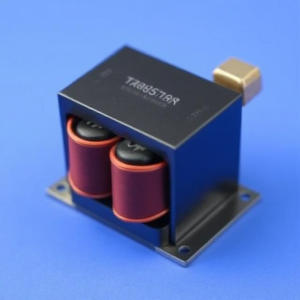What is an Audio Transformer?
An audio transformer is a special type of transformer that is designed specifically to work with audio signals, typically in the range of human hearing (20 Hz to 20,000 Hz). It is used to transfer audio signals from one circuit to another, often while also changing the voltage or impedance (resistance) of the signal.

A transformer works on the principle of electromagnetic induction. It has two main parts:
- Primary Coil (Winding): This is where the input signal goes.
- Secondary Coil (Winding): This is where the transformed output signal comes out.
The coils are usually wound around a magnetic core (usually made of iron), and the audio signal in the primary coil creates a magnetic field that induces a signal in the secondary coil.
Why Do We Need Audio Transformers?
Audio transformers are used for several important purposes in audio equipment, including:
- Impedance Matching: Different devices (like microphones, amplifiers, speakers) may have different impedance (resistance to the flow of electrical current). Transformers can match the impedance of different devices so that the audio signal flows properly without loss of quality or damage to the devices.
- For example, a microphone might have low impedance, while an amplifier might need a higher impedance to work well. An audio transformer can match these two impedances.
- Signal Isolation: Sometimes, you want to separate two parts of an audio system to avoid noise, interference, or ground loops. An audio transformer can do this by keeping the circuits electrically isolated from each other. This can reduce hum or buzzing sounds, which are often caused by unwanted electrical interference.
- Voltage Conversion: Audio transformers can change the voltage level of the signal. This is important when you need to increase or decrease the strength of the audio signal.
- For example, if you have a weak signal coming from a microphone, an audio transformer can step it up to a higher voltage level to send it to the amplifier.
- Preventing Signal Distortion: By isolating circuits and providing impedance matching, audio transformers can help prevent distortion in the signal. This means clearer, more accurate sound reproduction.
How Does an Audio Transformer Work?
Let’s go through the basic steps:
- Input Signal: The audio signal (like a sound from a microphone or a musical instrument) enters the primary coil.
- Magnetic Field: The audio signal creates a changing magnetic field around the primary coil.
- Induced Signal: This magnetic field induces a corresponding signal in the secondary coil.
- Output Signal: The output signal is then taken from the secondary coil and sent to the next device, like an amplifier or speaker.
Types of Audio Transformers
There are different types of audio transformers used for various purposes:
- Step-Up Transformer: Increases the voltage of the signal.
- Step-Down Transformer: Decreases the voltage of the signal.
- Matching Transformers: Used for impedance matching (e.g., matching the impedance of a microphone to a mixer or amplifier).
- Isolating Transformers: Used to separate different parts of a system to prevent electrical interference or hum.
Example in Real Life: A Microphone to Amplifier
Imagine you’re connecting a microphone to an amplifier:
- Microphones often have low impedance, but many amplifiers are designed to work best with higher impedance signals.
- If you connect them directly, the sound quality could be poor, and you could lose some of the signal.
- By using an audio transformer between the microphone and the amplifier, you can match the impedance so that the signal flows more efficiently and clearly without distortion.
Summary of Audio Transformer Functions:
- Impedance matching: Ensures that devices with different impedances can work together.
- Signal isolation: Helps reduce noise and interference between devices.
- Voltage conversion: Increases or decreases the voltage of the signal as needed.
- Prevents distortion: Helps keep the audio signal clean and accurate.
Simple Analogy:
Think of an audio transformer like a water pipe. The water (signal) flows from one side (primary coil) to the other side (secondary coil), but depending on the pipe’s size (impedance), the flow can be adjusted. The transformer ensures that the water flows properly, whether you need to increase or decrease the flow.
Tags: amplifier transformer, audio circuit isolation, audio electronics., audio equipment transformer, audio frequency transformer, audio impedance matching, audio noise reduction, audio signal clarity, audio signal distortion prevention, audio signal transfer, audio signal transformer, audio signal voltage adjustment, audio system components, audio transformer, audio transformer working principle, electrical interference reduction, Electromagnetic, electromagnetic induction, ground loop isolation, impedance matching transformer, isolating transformers, magnetic core, matching transformers, microphone transformer, primary coil, secondary coil, signal isolation transformer, sound quality improvement, step-down audio transformer, step-up audio transformer, transformer for microphones, voltage conversion transformer


